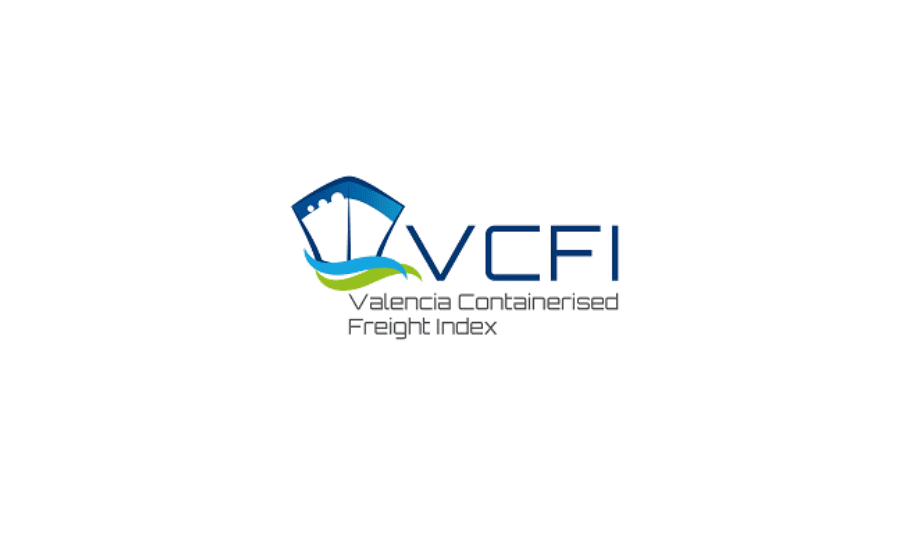The Valencia Container Freight Index (VCFI) for June 2022 has broken its upward trend with a decrease of -2.19% compared to the previous month. Since July 2020, when it fell by 2.72%, the trend has been one of constant growth (except for February 2022 with -0.19%).
The Index stands at 4,647.32 points, accumulating a growth of 364.73% since the beginning of the series in 2018. As for the different areas that make up the VCFI, the general trend has been downward, with the Central America and Caribbean area (-5.75%) and the Western Mediterranean (-1.99%) standing out. The only relative increase was seen in the USA & Canada region (0.40%).
The value of the VCFI, in line with other benchmark indicators, points to a containment in the price of maritime transport. However, developments in the coming months are unknown as the global economy continues to be threatened mainly by high commodity prices and supply chain problems.
Moreover, in June 2022, in addition to the existing geopolitical tensions, Algeria’s blockade of trade affected international trade and, consequently, maritime transport flows.
Rise in the price of a barrel of Brent crude oil
In June 2022, the average price of a barrel of Brent crude oil was $122.71, compared to $113.34 in May, which implies a rise of 8.27% and an accumulated annual increase of 67.73%. Similarly, marine fuels affecting bunkering (bunkering of ships at sea) have fluctuated upwards. Thus, the price of VLSFO (Very Low Sulphur Fuel Oil) has risen from 1030.50$ in May to 1077.50$ in June, representing an increase of 4.56%.
Drop in idle fleet levels
Data provided by Linerlytica on the evolution of demand in the main ports, states that the volume of port traffic has been below forecast
In terms of capacity on offer, data from the consultancy Alphaliner show a drop in idle fleet levels compared to the previous month. Thus, in mid-June of the year, 60 vessels were idle for a total of 240,806 TEU, representing 1% of the total active fleet. The percentage of idle ships is still low, but still represents an increase compared to 2021, when the idle fleet represented on average 2.5% of the total.
As regards the data provided by Linerlytica on the evolution of demand in the main ports, the volume of port traffic has been below forecast.
Although the beginning of June 2022 saw the reopening of operations at the port of Shanghai and a rise in container demand was expected, it will take between four and eight weeks for these operations to return to normal activity.
On the other hand, in the United States and Europe, the increase in the level of stocks together with a slowdown in private consumption has caused a decrease in container traffic.
A downward trend in the levels of congestion
Congestion in the Asian ports of Ningbo and Shanghai has decreased, reducing the queues of ships at anchor
In June 2022, there has been a clear downward trend in the levels of congestion, although the average levels of fluidity prior to the pandemic have not yet been reached. Thus, port congestion worldwide fell to 11.5% in the last week of June due to the boost provided by the reduction in congestion in China and on the west coast of the United States.
In particular, congestion in the Asian ports of Ningbo and Shanghai has decreased, reducing the queues of ships at anchor. Similarly, as far as the US West Coast is concerned, the decrease in congestion can be seen by the 100,000 TEU waiting compared to 740,000 TEU in January this year.
In contrast, congestion has increased on the US east coast and in Europe. According to Linerlytica’s June 2022 data, port congestion in North Asia, North America and Northern Europe was 30%, 32% and 13% respectively.
VCFI Western Mediterranean
As for the Western Mediterranean sub-index, a decrease of -1.99% was observed, standing at 2,440.08 points and accumulating a growth of 144.01% since the beginning of the series in 2018.
It is worth noting the Algerian government’s decision to suspend the Treaty of Friendship, Good Neighbourliness and Cooperation signed with Spain two decades ago. Undoubtedly, this fact has meant a retraction in trade flows with this country, which is an important economic partner.
VCFI Far East
In the Far East area, a fall of -0.33% is observed, standing at 3,753.69 points and accumulating an increase of 275.37% with respect to the start of the series in January 2018.
In this line, a decrease in Valenciaport’s export flows with China, its main trading partner, continues to stand out, as a side effect of the restrictions and blockades due to the 0-COVID policy. However, it is expected to be reversed with the lifting of the restrictions.
Taking all this together, looking ahead to the coming months, an increase in import demand is expected as the Peak Season hits sea transportation. The efficiency of logistics chains will be key to maintaining the supply-demand balance in an already stressed market.
